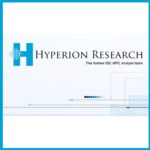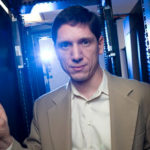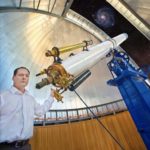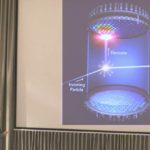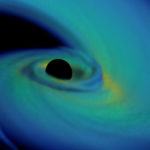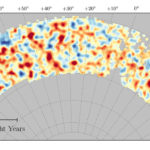Two Berkeley Lab-led projects—Celeste and Galactos—were honored with Hyperion Research’s 2017 HPC Innovation Excellence Awards for “the outstanding application of HPC for business and scientific achievements.” The HPC Innovation Excellence awards are designed to showcase return on investment and success stories involving HPC; to help other users better understand the benefits of adopting HPC; and to help justify HPC investments, including for small and medium-size enterprises.
Podcast: Optimizing Cosmos Code on Intel Xeon Phi
In this TACC podcast, Cosmos code developer Chris Fragile joins host Jorge Salazar for a discussion on how researchers are using supercomputers to simulate the inner workings of Black holes. “For this simulation, the manycore architecture of KNL presents new challenges for researchers trying to get the best compute performance. This is a computer chip that has lots of cores compared to some of the other chips one might have interacted with on other systems,” McDougall explained. “More attention needs to be paid to the design of software to run effectively on those types of chips.”
Video: Supercomputing Models Enable Detection of a Cosmic Cataclysm
In this podcast, Peter Nugent from Berkeley Lab explains how scientists confirmed the first-ever measurement of the merger of two neutron stars and its explosive aftermath. “Simulations succeeded in modeling what would happen in an incredibly complex phenomenon like a neutron star merger. Without the models, we all probably all would have been mystified by exactly what we were seeing in the sky.”
Illinois Supercomputers Tag Team for Big Bang Simulation
Researchers are tapping Argonne and NCSA supercomputers to tackle the unprecedented amounts of data involved with simulating the Big Bang. “Researchers performed cosmological simulations on the ALCF’s Mira supercomputer, and then sent huge quantities of data to UI’s Blue Waters, which is better suited to perform the required data analysis tasks because of its processing power and memory balance.”
How Extreme Energy Jets Escape a Black Hole
Researchers are using XSEDE supercomputers to better understand the forces at work at the center of the Milky Way galaxy. The work could reveal how instabilities develop in extreme energy releases from black holes. “While nothing – not even light – can escape a black hole’s interior, the jets somehow manage to draw their energy from the black hole.”
Video: Dark Matter – Detecting Gravity’s Hidden Hand
“One of today’s great challenges in physics is to observe individual dark matter particles coming in from the galaxy and striking particles on Earth. This talk presents the evidence for dark matter and introduces one of the most ambitious efforts to discover interactions of dark matter particles, using tons of cryogenic liquid in a deep underground laboratory.”
When Neutron Stars and Black Holes Collide
Working with an international team, scientists at Berkeley Lab have developed new computer models to explore what happens when a black hole joins with a neutron star – the superdense remnant of an exploded star. “If we can follow up LIGO detections with telescopes and catch a radioactive glow, we may finally witness the birthplace of the heaviest elements in the universe,” he said. “That would answer one of the longest-standing questions in astrophysics.”
Supercomputing the Dark Energy Survey at NCSA
Researchers are using NCSA supercomputers to explore the mysteries of Dark Matter. “NCSA recognized many years ago the key role that advanced computing and data management would have in astronomy and is thrilled with the results of this collaboration with campus and our partners at Fermilab and the National Optical Astronomy Observatory,” said NCSA Director, Bill Gropp.
Video: Unlocking the Mysteries of the Universe with Supercomputers
Katrin Heitmann from the University of Chicago presented this talk at PASC17. “In this talk I will introduce HACC, the Hardware/Hybrid Accelerated Cosmology Code, which is being developed to combat the tremendous computational challenge to simulate our Universe.” After the talk, she discusses Dark Matter with Rich Brueckner from insideHPC.
PASC17 Plenary to Focus on Supercomputing Cosmology
Today the PASC17 Conference announced that this year’s plenary presentation will be entitled “Unlocking the Mysteries of the Universe with Supercomputers.” The plenary presentation will be given by Katrin Heitmann, Senior Member of the Computation Institute at the University of Chicago and the Kavli Institute for Physical Cosmology, USA.

